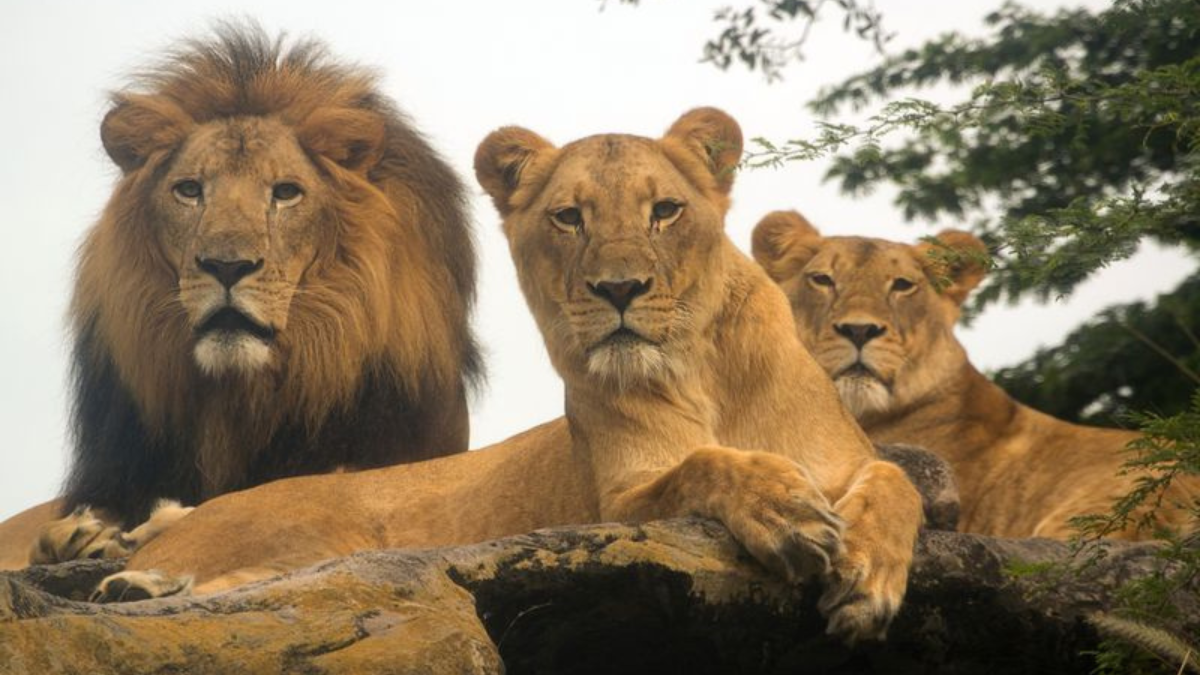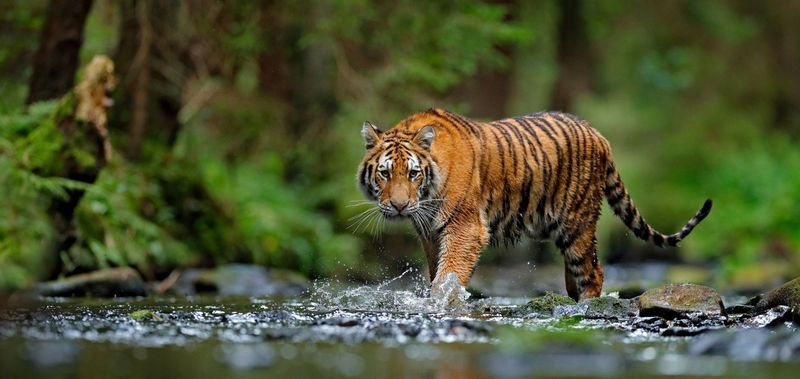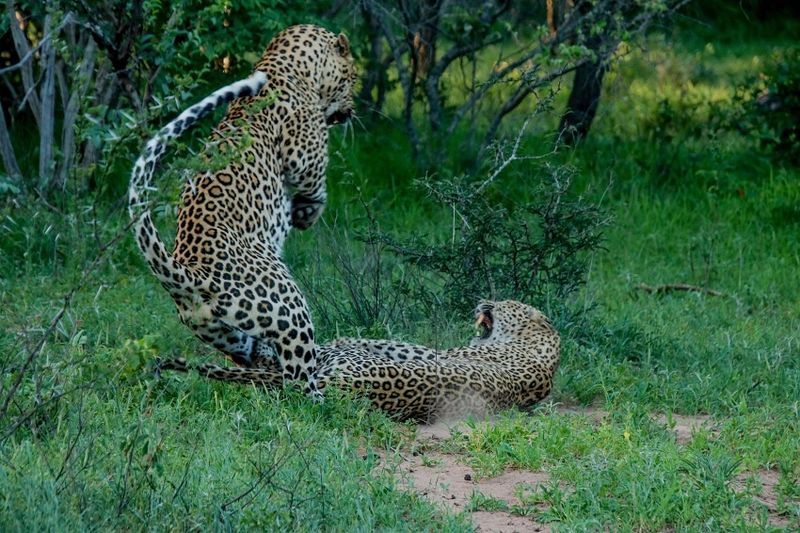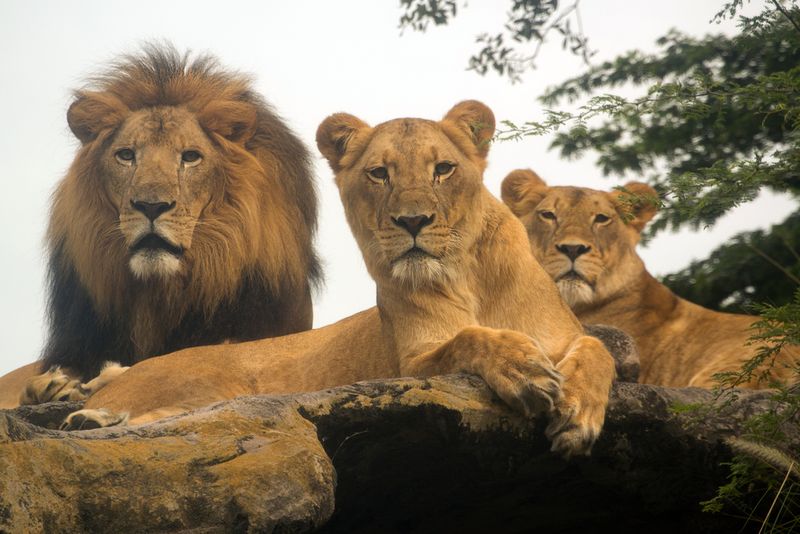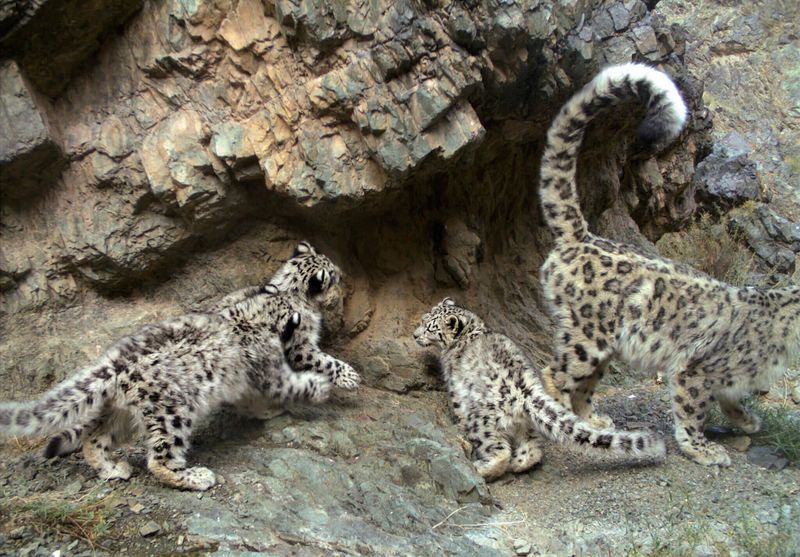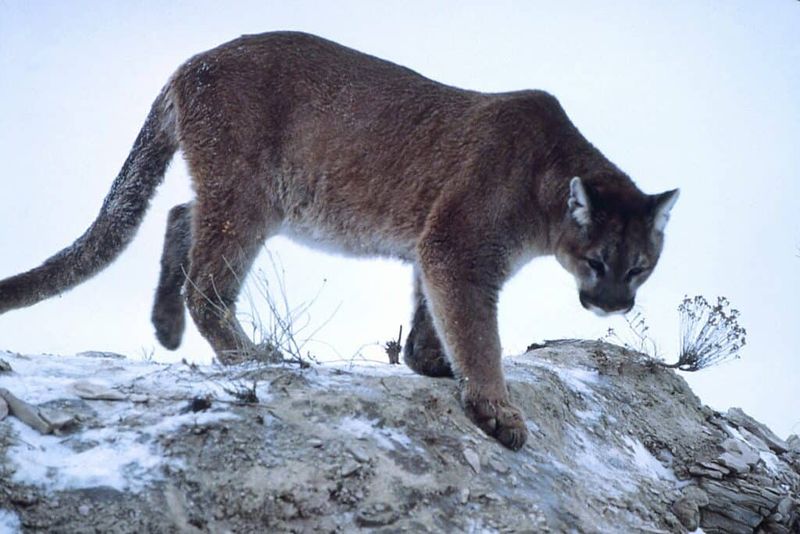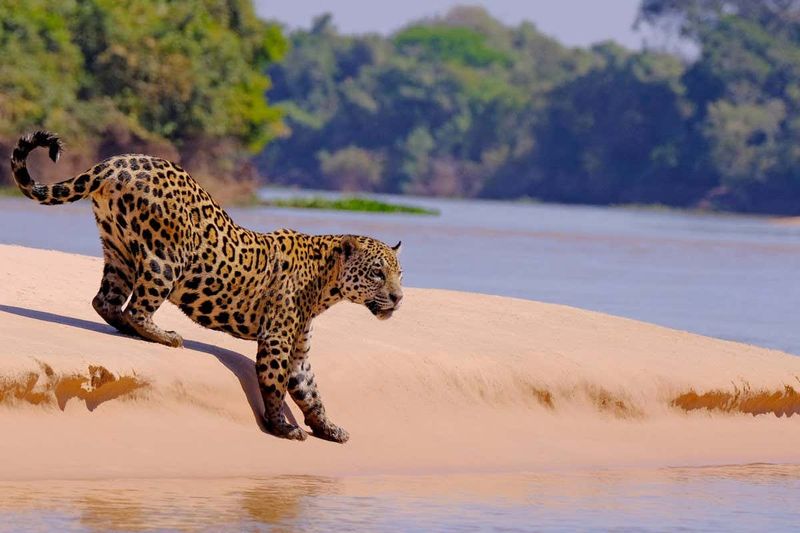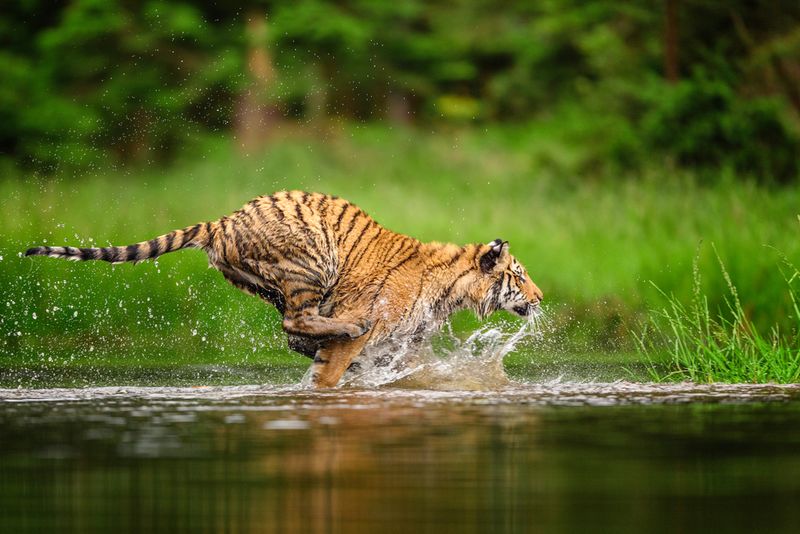📖 Table of Content:
Big cats like lions, tigers, and leopards depend on vast, undisturbed landscapes to thrive. These apex predators rely on space not only to hunt and find mates but also to avoid conflict with other large animals. Fragmented environments can disrupt their natural behavior and survival.
As human development expands, roads, agriculture, and urban areas increasingly cut through wild habitats. This isolation limits big cats’ access to resources and increases the risk of dangerous encounters with people. It also restricts their ability to roam freely, which is essential to their health and reproduction.
Protecting large, connected habitats is key to the future of these majestic animals. Without safe, expansive territories, their populations decline, and ecosystems suffer. Ensuring their survival requires thoughtful conservation strategies that keep wild spaces whole.
1. Hunting Grounds for Prey Capture
Lions, tigers, and other big cats require enormous hunting territories to find enough food. A single tiger might patrol up to 40 square miles in search of deer, wild pigs, and other prey animals.
Big cats are ambush predators who need different types of terrain to hunt successfully. Forests provide cover for stalking, while open areas allow them to spot prey from a distance. Many hunts fail, so having multiple hunting spots within their territory increases their chances of catching enough food.
When territories shrink or get divided by roads, big cats often struggle to find enough food and may starve.
2. Genetic Diversity Through Mating
Finding mates becomes a serious challenge when big cat populations are isolated in small patches of habitat. Male lions typically travel up to 120 miles to find new prides, preventing inbreeding problems.
Roads and developments that cut through territories create barriers that stop cats from meeting partners from different areas. This leads to smaller genetic pools where related cats mate with each other.
Over time, this inbreeding causes birth defects, weakened immune systems, and other health problems that threaten the entire population’s survival. Large connected territories allow healthy genetic mixing.
3. Territory Marking and Defense
Big cats are extremely territorial animals who spend significant energy marking and defending their land. They use scent marks, scratches on trees, and distinctive roars or calls to warn others away from their space.
A jaguar might spend hours each day patrolling territory edges, refreshing scent marks and looking for intruders. When territories become too small, cats are forced into constant conflict with neighbors, causing stress, injuries, and even death from fighting.
Proper territories allow each animal to maintain its own space without excessive conflict, reducing unnecessary deaths and allowing populations to remain stable.
4. Raising Cubs Safely
Raising cubs requires a secure, peaceful environment, especially for female big cats. Cheetahs tuck their babies into dense grass and check on them frequently to feed and shield them from threats.
Cubs learn hunting skills by practicing in different environments within their mother’s territory. They need safe spaces to play, climb, and develop coordination without human disturbances.
When territories become fragmented by roads or development, mothers struggle to find safe denning sites. Cubs face higher mortality rates from predators, starvation, or vehicle collisions when forced to cross dangerous areas between habitat fragments.
5. Seasonal Migration Patterns
To stay near their food sources, big cats frequently mirror the seasonal movements of prey animals. North American mountain lions are known to follow deer migrations across landscapes that span hundreds of miles.
These natural migrations help cats find food year-round as prey animals respond to changing weather and plant growth. Cats also avoid overusing any single area, allowing vegetation and prey populations to recover.
Roads, fences, and developments block these critical migration paths. When cats can’t follow traditional routes, they become trapped in areas that may not provide enough food during certain seasons.
6. Adaptation to Environmental Changes
Large territories give big cats options when facing environmental challenges like droughts, fires, or floods. A leopard with extensive territory can move to higher ground during floods or find water sources during dry periods.
These natural adaptations have helped cats survive for millions of years through changing climates. Different habitat types within their range provide backup resources when conditions become difficult in one area.
Climate change makes these adaptive movements even more important. Cats with restricted territories have nowhere to go when conditions deteriorate, leading to starvation, dehydration, or direct conflict with humans when desperate animals enter villages or farms.
7. Mental Health and Natural Behaviors
Big cats evolved complex behaviors that require space to express. Tigers enjoy swimming and need access to water bodies throughout their territory. Lions engage in social bonding activities that strengthen pride relationships.
Without enough space, cats develop stress-related behaviors similar to those seen in zoo animals. They may pace, become aggressive, or show signs of depression. Research shows that cats in small territories have higher stress hormone levels than those with adequate space.
Natural behaviors like climbing, swimming, stalking, and running at full speed require diverse environments within their territory. These activities keep cats mentally and physically healthy throughout their lives.
